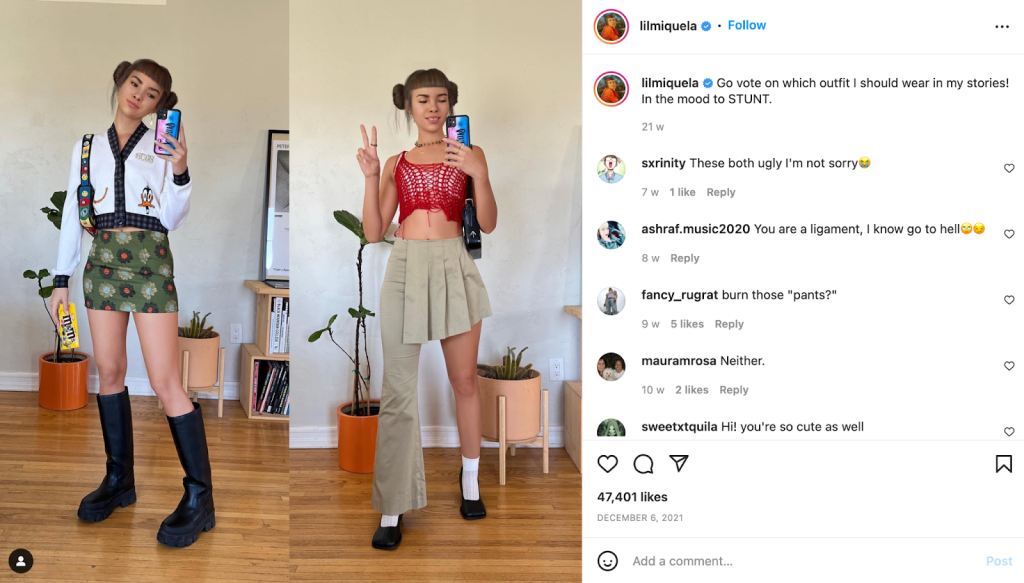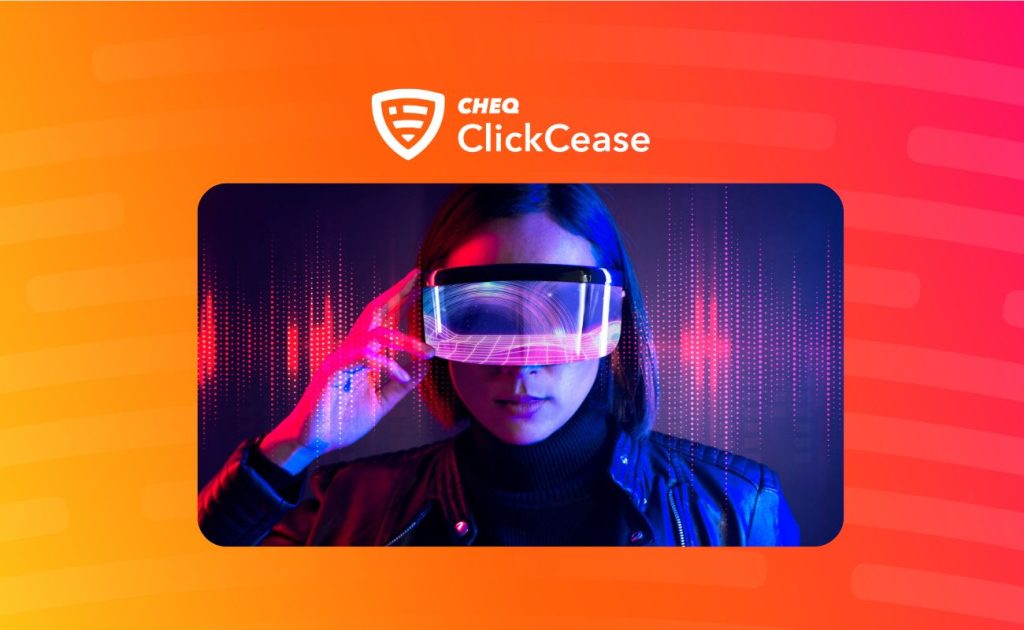Are you ready for the metaverse? If you’ve been paying attention to the digital news recently, you’ve probably heard talk of this online world. In fact, Facebook owner Mark Zuckerberg is so sure that the future is digital that he’s even renamed his company Meta and is investing billions into developing his vision of this new online frontier.
And of course, marketers are already heralding the huge opportunities to be had by advertising in the metaverse. Skate brand Vans even sponsored a metaverse based skateboarding competition in popular online game Roblox, and Nike too are taking these opportunities seriously.
If you’ve got an eyebrow raised, or you’re shaking your head in bemusement at this point, you’re probably a. Old and/or b. Not quite into the hype that the metaverse will be the next big thing.
Sure, the metaverse might seem like confusing technology that might be a passing fad. But as we increasingly move to remote work, online shopping, and even socializing and dating online, it seems like the metaverse is part of a logical next step.
You might also notice that many brands that are taking the metaverse seriously are those that target the millennial and gen Z markets. In short, those that are looking to the future.
So with that in mind, it’s probably a good idea to get up to speed on the metaverse and the huge potential for digital marketers.
What is the Metaverse?
The metaverse is a term used to describe immersive virtual reality-based worlds on the internet. If you’ve played any game online in the past few years, you’ve experienced the metaverse in its current guise.
Games like Minecraft, Roblox, Fortnite, or even Grand Theft Auto, all take place within their own self-contained universe.
Metaverse-focused virtual worlds, such as Decentraland, Sandbox, and Axie Infinity are rapidly growing in popularity too, and these are where many of the marketing opportunities lie.
You may or may not be into these games, but that isn’t the point here.
The technology that underpins these games is what makes up the metaverse. And, if you believe Mr. Zuckerberg, we’ll all be having some kind of interaction using some kind of metaverse-based platform within the next few years.
The cynical among you might be thinking that the Zuck is only hoping to shift more of his Oculus headsets. The high end virtual reality company that Mark Zuckerberg invested in several years back.
But, he might have a point.
The whole world recently experienced what it’s like to be locked down at home (thanks Covid), and online services such as Zoom and HouseParty have had an explosion in growth.
So it’s only a small stretch to go from Zoom meetings to potentially having metaverse meetings with friends, family or co-workers.
Does anyone use the metaverse (beyond gaming)?
In short, oh yes….
The metaverse has been widely embraced by a number of companies and even government institutions. Yes, it’s not just for moody teenagers who spend too much time in their rooms.
Some recent events in the metaverse include a fashion show within the popular Decentraland game, and a digital garden sponsored by Gucci.
South Korea’s digitally forward capital city Seoul has even started work to design a metaverse based infrastructure for the city. The plan is to allow residents and visitors to access a wide range of services, from sightseeing or attending events, to paying taxes or contacting local government officials.
And even the famous stinky fruit, the durian, is now in the metaverse thanks to the tourism authority of Thailand.
And I haven’t even mentioned NFT’s, or non-fungible tokens yet.
Nike and Adidas have both embraced the world of NFT’s, which are crypto based collectible assets, to ensure their brands remain visible in the metaverse. Players can customize their avatars with branded items, and even buy drinks, or attend events such as music festivals.
Put very simply, the metaverse is growing rapidly and it’s predicted to be a $758 billion market by 2026. This is no flash in the pan.
AR and VR
The metaverse isn’t just about games. Augmented reality offers another way to build digital elements into the world around us, without needing to immerse ourselves in a digital world.
Google and Facebook already use elements of augmented reality in some of their software. Google’s Live View, for example, allows users to overlay digital data such as directions or local shopping information. Facebook also offer augmented reality ads.
Of course there are plenty of games which use AR too. The best known of these is probably Pokemon Go, which got lots of headlines when it came out.
But these AR games offer another potential channel for advertising too, especially as they evolve and improve.
How does advertising work in the metaverse?
There are a number of ways you can advertise in the metaverse. And you don’t even need to be one of the billion dollar brands we’ve mentioned already to get in on the action.
In-world billboards
Probably the easiest way to get some brand visibility in the metaverse is to use billboards or banners. Much like in the real world, these strategically placed ads can simply be used to improve awareness and familiarity with your brand.
However, metaverse billboards have the added potential of being dynamic. If you’ve ever seen those images on social media of 3D billboards in cities like Tokyo or New York, this is an opportunity for metaverse ads to really shine.
At the moment, metaverse billboard ads are one of the more affordable options, unlike real world billboards. And although the impressions generated might not be on a par with, for example, Instagram Ads, you’re still getting your metaverse ads seen.
Events/sponsoring
With artists like Ariana Grande and Snoop Dogg embracing the metaverse, there is also more opportunity to sponsor high profile events such as concerts. Fashion shows and skateboarding events, as mentioned above, also present some incredible opportunities for ads in the metaverse.
It’s also likely that we’ll see corporate events, webinars and business meetings move into the metaverse. Again, a great way to get your brand seen with in-event sponsorships.
Consider the cost of sponsoring a similar event in the real world and most likely, for now at least, the cost to run metaverse ads will be much more affordable.
The truth is that when it comes to events in the metaverse your imagination is the limit…
Experiences
A fun new way to harness metaverse advertising is using in-world experiences. Sandbox showcased this with their recent Atari themed event, where gamers could enjoy retro games within the Sandbox metaverse.

For those that don’t know, Sandbox is the metaverse world where Snoop Dogg has been building his real estate empire. In fact, a fan recently paid $450,000 to be Snoop’s metaverse neighbor. Yup, there’s some crazy money flying around in the metaverse.
Sandbox is an immersive and highly customizable game, so the opportunity to build something branded is still relatively accessible to people.
You don’t necessarily need to create an immersive gaming experience within a popular game to turn digital heads.
Events, like the ones we’ve mentioned above, are just part of the picture. Again, your imagination is the limit.
Collectibles/NFTs
Whatever your opinion of NFT’s and the world of crypto, there is no denying its popularity. And, with popularity comes opportunity.
Non-fungible tokens, or NFTs, are the collectibles of the crypto world and by extension the metaverse. They need to be built on a blockchain, such as Ethereum or Solana, which supplies proof of their uniqueness.
As mentioned above, several major brands have embraced the world of NFTs, as have companies such as Marvel, Taco Bell and the English Football Premier League. In fact the UK government has proposed a line of NFTs to showcase their credentials as forward looking tech innovators.
To get into the uses and potential of NFT’s is a whole other universe in itself. But some ideas for their uses include collectible items, rewards or giveaways, proof of membership or simply limited edition products.
One brand that has harnessed all of these in one NFT is the Bored Ape Yacht Club, or BAYC. With Bored Apes now going for absurd sums of money, owning one isn’t just about having a collectible monkey jpeg. They also grant you exclusive membership to a world of apes with regular events for Bored Ape owners, free extras (also known as airdrops) such as new NFTs and money in the form of the new crypto APE token.
e-Commerce or i-Commerce
Selling products through the metaverse is still a relatively new concept. We already have D2A (direct to avatar) products, where people can buy items for their digital personalities. But it’s widely expected we will start to see more opportunities to sell products through the metaverse for real world use.
Thinking of how online shopping works, perhaps soon we’ll be able to visit the virtual Nike store as our game avatar, try on a pair of sneakers and have them shipped to our real world homes to wear for real!
These virtual online shops could serve as a form of advertising for your real world business. Perhaps while playing GTA online, a player will stumble into your store, see a unique t-shirt or pair of sunglasses and purchase them using their in-game currency – with delivery to your home next day!
Influencers
It’s not just people who can be influencers any more… If you’ve never heard of Lil Miquela then you probably will do soon (excluding me talking about her now). This computer generated Ai version of a 19 year old girl has already built a huge following on mainstream social media (like, OMG, obviouslyyyy).

Giving a whole new meaning to the term bot traffic, these computer generated profiles are expected to become more realistic, more popular and most likely, much more influential too.
The future?
It’s clear that the internet is still evolving and progressing, and the metaverse is part of that. Advertising is always at the forefront of technological innovation.
Looking at how social media has come to dominate our lives, and how that has relied heavily on advertising revenue, it’s clear that the metaverse in some form will be a major advertising format.
Much of the infrastructure of the metaverse depends on blockchain technology. Games like the Sandbox and Axie Infinity already have their tokenization, and NFT’s are of course blockchain based.
One of the benefits of blockchain technology is that it makes it harder to fake traffic. And fake traffic such as bots have been a major challenge for online advertising. Without getting into the fundamentals of blockchain, the technology means that it’s harder to fake views. But that doesn’t mean it’s impossible.
In fact, automating activity on the blockchain is a popular activity, mostly for trading crypto and arbitrage. However, marketplaces such as Opensea, the most popular NFT platform, still see scalping and trading bots.
There are also some blockchain based projects designed to validate ad engagement, for example Verasity.
So although metaverse advertising and blockchain in general could make it harder for fake traffic to affect ads, it by no means spells the end of click fraud or ad fraud.
How can I advertise in the metaverse?
At the moment, running metaverse ads is fragmented. In general, you’ll need to look at the specific virtual world you want to advertise in – for example, Roblox or Axie Infinity, and set up your campaign according to their specifications.
There are some agencies that will help you run metaverse ads, which can help to standardize your campaigns across different virtual worlds.
Facebook augmented reality ads also make an interesting introduction to the world of metaverse ads.
Although ClickCease don’t yet cover the metaverse, make sure to protect your Google Ads, Facebook Ads and Bing Ads with our industry leading click fraud protection software.
